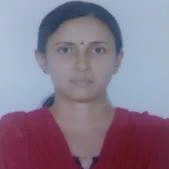
Jyoti M. Katagi
Work place: Biluru Gurubasava Mahaswamiji Institute of Technology/Electronics & Communication Engineering, Mudhol-587313, Karnataka, India
E-mail: katagi.jyoti@gmail.com
Website:
Research Interests: Data Structures and Algorithms, Process Control System, Computer systems and computational processes, Signal Processing, Control Theory
Biography
Smt. Jyoti M. Katagi received her B. E. Degree from Karnataka University, Dharwad and M.Tech. degree in Digital Communication and Networking from Visvesvaraya Technological University, Belgaum. Presently she is pursuing her Ph. D. in Speech Processing at ECE Department, Basaveshwar Engineering College (Autonomous), Bagalkot, Visvesvaraya Technological University, Belgaum. She has teaching experience of 15 years. Her research interests are: Speech Proceesing, Control Systems and Digital Signal Processing
Author Articles
Sound Source Localization Ability in Hearing Aids: A Survey
By Jyoti M. Katagi Pandurangarao N. Kulkarni
DOI: https://doi.org/10.5815/ijigsp.2021.06.04, Pub. Date: 8 Dec. 2021
Ability to locate sound source in human acoustic system is a prime factor. The source of sound has various spectral, temporal and strength characteristics depending on where it is located. To identify the sound location, the listeners analyze these characteristics arising from various directions on the horizontal and the vertical surfaces. In noisy background, it is very difficult to understand the speech for individuals with sensorineural hearing loss. In order to reliably distinguish various sound sources and increase speech intelligibility in noisy conditions, binaural hearing is adopted. Diffraction induced by the pinnae, head, shoulders and torso changes the pressure waveform when sound waves travel from the audio source to the listener's eardrum. Two transfer functions that specify the relation between the sound pressures at the listener's right and left ear drums will catch these propagation effects. These spectral changes are recorded by Head Related Transfer Functions (HRTFs). Different hearing aid algorithms are to be studied to measure their effectiveness in improving speech perception through series of subjective evaluations involving subjects with sensorineural hearing loss with different types of loss characteristics under different listening conditions. We investigated the various proposed approaches, weighed in on their benefits and drawbacks and most importantly, examined whether and how the resulting HRTFs perceptual validity is evaluated. This paper brings out current research efforts on sound source localization ability in hearing aids, which includes use of Head Related Transfer Functions (HRTFs) for generating spatial sounds in elevation and azimuth plane, evaluating the effect of monaural and binaural hearing aid algorithms on source localization under different listening conditions on subjects with different hearing losses and also to assess the effectiveness of localization with type of hearing aids.
[...] Read more.Other Articles
Subscribe to receive issue release notifications and newsletters from MECS Press journals